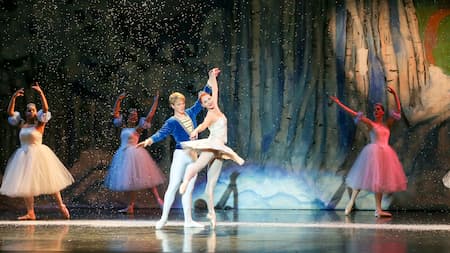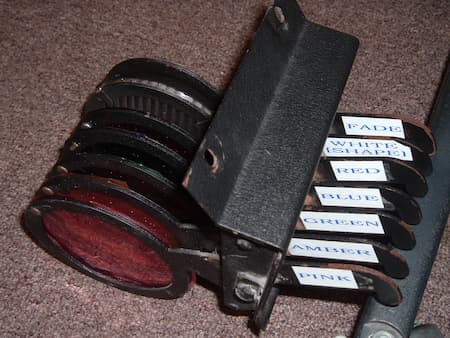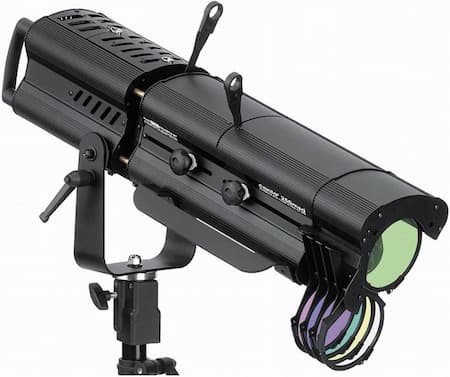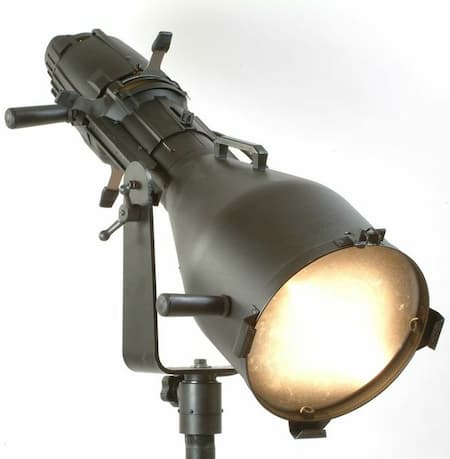Followspots
Followspots require an operator who tracks performers around the stage. Used primarily in musicals and concerts, and typically employed from the front of the house (behind the audience) they may also be placed in catwalks, towers or backlight positions. Infrequently used in non-lyrical productions (due to their harsh, unsubtle nature), they are occasionally employed with diffusion gel to make them less jarring.
The Nutcracker produced by The North Star Ballet. Choreography by Norman Shelburne. Scenery and Costumes by Celeste Sullivan, Lighting by Kade Mendelowitz.
Followspots typically have:
- A very bright source, often a high-intensity discharge lamp.
- A mechanical douser (often similar to window blinds) to dim the beam (especially important if an HID source is used – which can not be dimmed).
- A lens (or lenses) which can be manually focused and adjusted.
- Shutters (often called “choppers”) typically from top and bottom with a single controller for blocking all of the light.
- An iris to adjust the size of the beam in a circular shape. Irises are made of a complex set of blades that work smoothly together…because of the intense heat created by followspot sources, followspot irises usually do not close completely, forcing the operator to use the choppers to completely block the light.
- A color magazine (called a “boomerang”) which contains several gel frames which can be used to quickly insert into the path of the beam. These may include gray and diffusion gel to quickly soften or artificially dim the light which can be used in addition to colored media.
In smaller venues, lekos may be outfitted with a handle (plus an iris ideally) to be used as a followspot. In this case, changing color is more difficult, and the operator does not have many options for shaping or dousing the light as compared to a true followspot, but they offer a more subtle option in a pinch.





 © Multimakers Multimedia
© Multimakers Multimedia